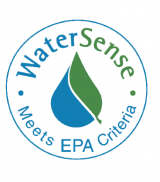Leadership in Energy and Environmental Design (LEED) is a rating system devised by the United States Green Building Council (USGBC) to evaluate the environmental performance of a building and encourage market transformation towards sustainable design.
Water management technologies that can help eco-friendly designed buildings to earn LEED credits are:
1. Eco friendly anti-scalants that are 100% Biodegradable
2. Eco friendly biocides such as NSF certified potable water biocides
3. Eco friendly bacteriostatic/biocidal technologies such as:
- Ultra-sound technologies that kill bacteria and algae
- Electro-magnetic waves that kill bacteria
- Ozone
- Electrolytic technologies that use Silver electrodes
- UV light
4. Technologies that help cooling towers to achieve high Cycles of Concentration hence lower water wastage by decreasing blowdown
5. Waste water treatment technologies that recycle waste water as oppposed to wastage to sewer
6. High efficiency Filtration technologies that lower Suspended Solids in the cooling water which is part of Legionella Management plans that are mandatory in countries such as the UK.
7. Rain water collection and use for landscape irrigation
8. Water vapor harvesting from evapotranspiration (ET).
9. Use weather data to automatically control irrigation for any sprinkler system to save water.
10. AOP (Advanced Oxidation Processes) are environmentally friendly processes that help to reduce the BOD and Bacterial Bioburden in your cooling tower.
11. Using appliances with WaterSense-labeled products in the USA which meet EPA's specifications for water efficiency and performance, and are backed by independent, third-party certification.

Figure 1. WaterSense Logo
12. Any LEED cetified building is required to have Construction and Demolition Waste Management Planning
13. Any LEED certified building is required to have a Building Product Disclosure and Optimization – Material Ingredients plan.
14. Any LEED certified building is required to have a Minimum Indoor Air Quality Performance Prerequisite according to ASHRAE Standard 62.1 updated to version 2010.
15. Any LEED certified building is required to use Low-Emitting Materials. For example, some times of floor covering are known to emit VOC's. Certain types of plastic piping are known to leach plasticizers, etc.
16. Any LEED certified building is required to use low mercury lamps. Reduced mercury limit from 90 picograms per lumen hour
to 70.
17. Any LEED certified building is required to have a Green Cleaning Policy. Chemicals that are biodegradable must be used. LEED V.4 added a provision for nonchemical and ionized water cleaning.
18. Any LEED certified building is required to have a maximum background noise of 40 dBA

Figure 2: Point categories for LEED certification
For a consultation on how to earn LEED credits for your buildings, contact us.
Rami E. Kremesti M.Sc., CEnv, CSci, CEnv
References:
2. LEED